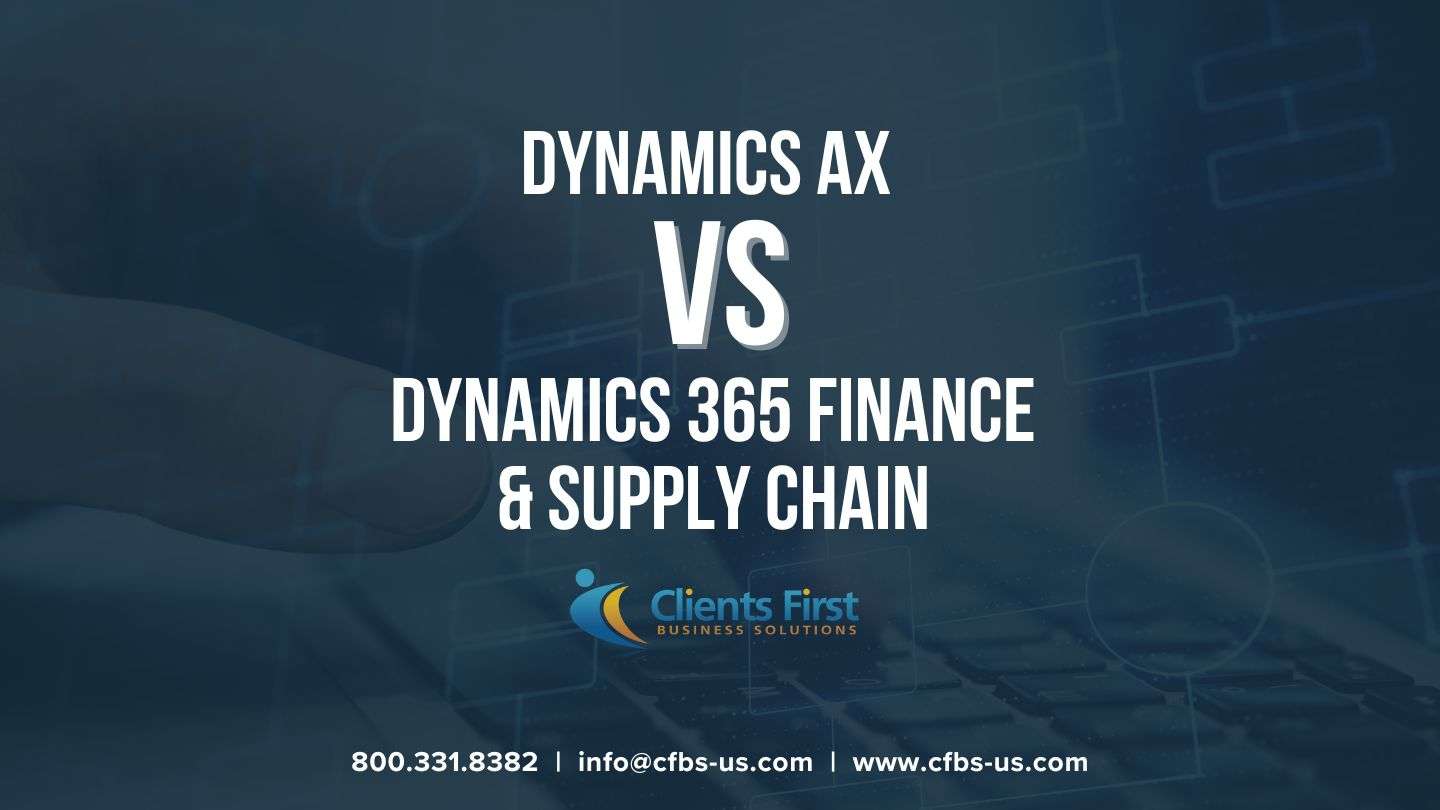11.29.23
 Dynamics AX vs Dynamics 365 Finance and Supply Chain">
Dynamics AX vs Dynamics 365 Finance and Supply Chain">
When it comes to Dynamics AX 2009, AX 2012, and AX 2012 R3, customers are faced with a crucial decision: stick with their legacy platform or make the leap to Dynamics 365 Finance and Supply Chain (D365) To help customers make an informed choice, it's important to consider the comparisons between the two.
Dynamics 365 Finance and Supply Chain has now become a more comprehensive ERP solution for enterprise organizations, thanks to the addition of key modules focused on supply chain and manufacturing. Clients First has customers that manufacture and we actively target the manufacturing industry in our sales and marketing so the addition of these modules has made our team very happy.
These new modules can be implemented or not, depending on your organization's requirements. This list is not all-inclusive and shows the differences from AX 2012 R3 to Dynamics 365.
In addition, we recommend that you keep up with the latest release information:
The functionality disparities between AX and D365 alone are sufficient to motivate production managers, controllers, CEOs, and general end users to make the switch to D365. However, we understand that CEOs, CFOs, CIOs, and IT Directors have additional concerns, such as infrastructure management and the associated upgrade costs.
Leverage Microsoft’s billion-dollar investment in data center security. Create robust security and access controls for apps and data with built-in features included in Dynamics 365 Finance and Dynamics 365 Supply Chain Management including:
Common Data Service ensures that other Dynamics 365 solutions have true data integration. Consider Dynamics 365 Sales and Customer Engagement apps.
Gain benefits with a monthly subscription model, including:
Reduce costs on company’s server maintenance, including:
Ensure seamless business operations from anywhere, at any time through Dynamics 365—powered by a native HTML5 browser-based user interface that:
Take full advantage of Dynamics 365’s evolving features and newest functionality:
Access real-time insights with Dynamics 365 with built-in predictive analytics—powered by Microsoft Power BI:
Today’s workforce is used to a more modern look and feel of applications such as Office 365, Google Docs, and numerous other tools that are intuitive and Internet-based. Dynamics 365 meets today’s workforce with:
The benefits of an ERP upgrade often take a backseat in decision-making. Upgrades are typically pursued because the legacy software is no longer supported by the vendor. However, it is crucial to evaluate the benefits and return on investment before embarking on an upgrade. If there are no discernible advantages and the legacy system can still be supported by an internal technology team or a Microsoft partner, there is no need to rush into a change. In some cases, compliance requirements may drive the decision to upgrade, but there are also independent software vendors (ISVs) or add-on solutions that can address those needs in a legacy system. Other factors that may deter a change include budget constraints for the project and concerns about employee adoption. While it is inevitable for companies to upgrade their systems at some point, the timing of the upgrade should be carefully considered to determine the most opportune moment for an organization to make the transition.
Choosing to upgrade and when should be analyzed with the assistance of a trusted Microsoft Partner like Clients First.
If you're ready to discuss your options with a knowledgeable partner, don't hesitate to reach out to Clients First Business Solutions. You can contact us at 800.331.8382 or email us at info@cfbs-us.com.
Our team brings unmatched efficiency and value for a smooth implementation and beyond. Find out how we can help your business gain a competitive advantage in the marketplace.
Free Consultation